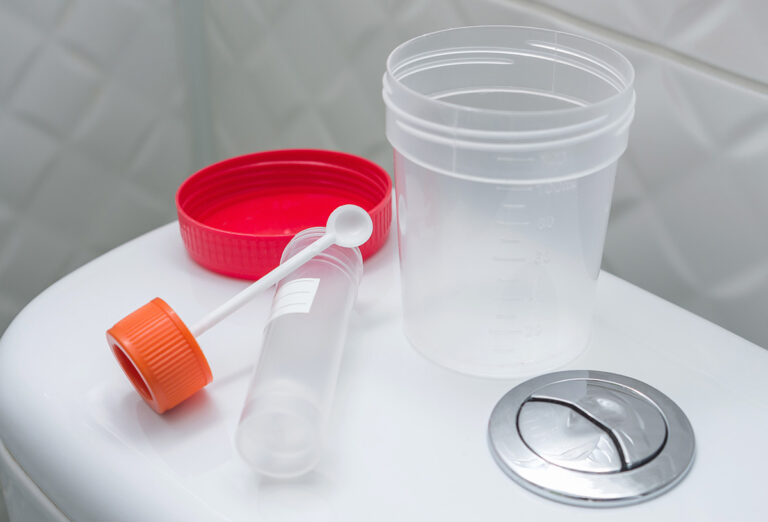About 70 million Americans experience digestive discomfort each year, making gastrointestinal (GI) concerns a frequent focus in clinical practice. Stool testing has become a valuable, non-invasive tool that helps assess key aspects of gut health, such as microbiome composition, inflammation, and digestive function.
As testing technologies evolve, clinicians now have access to a range of methods, including culture-based techniques, PCR (polymerase chain reaction), and metagenomic sequencing. Each offers unique insights but also comes with limitations that must be understood to interpret results effectively.
This article offers a clear, side-by-side comparison of common stool testing methods and selected test platforms. It’s designed to help providers make informed choices based on patient presentation, test characteristics, and clinical goals.
By building confidence in how these tools are selected and applied, providers can enhance the role of gut health evaluation in personalized, evidence-informed care.
Whole person care is the future.
Fullscript puts it within reach.
healthcare is delivered.
Evolution of Stool Testing: Methodologies that Shape Interpretation
Stool testing has evolved considerably over the past several decades. What was once limited to detecting a small number of pathogens has expanded into a range of methods that assess microbial composition, immune activity, digestive function, and more.
For providers, understanding the foundational differences between test types is key to selecting the right approach for different clinical questions.
Culture-Based Testing
Culture-based testing is one of the oldest approaches to analyzing stool samples. It involves placing the specimen in a controlled environment where microorganisms can grow under specific conditions. Once cultured, organisms can be identified visually or biochemically.
What it can tell you
- Identifies certain bacteria, yeasts, and parasites that can grow in lab conditions
- Can include testing for sensitivity to antimicrobial agents
Limitations to keep in mind
- Not all gut microbes grow well, or at all, in artificial environments
- Results may reflect only a portion of the microbial population
- Anaerobic organisms, which are common in the gut, are often underrepresented
Best fit
Culture may still be useful when specific organisms are suspected or when antimicrobial sensitivity data is needed. However, its limited scope makes it less suitable for assessing overall gut ecosystem health.
PCR and qPCR Testing
PCR (polymerase chain reaction) and qPCR (quantitative PCR) are molecular techniques that detect microbial DNA in stool samples.
These tests focus on predefined targets, such as specific bacteria, viruses, or genetic markers related to inflammation or immune response.
What it can tell you
- Detects the presence of targeted microorganisms, even in small amounts
- Provides faster results than culture methods
Limitations to keep in mind
- Only detects what it’s designed to look for; anything outside the panel is missed
- Doesn’t provide a full picture of microbial diversity or function
- Cannot distinguish between living and dead microbes
Best fit
PCR-based tests are often used when infection is suspected or when quick answers are needed for specific clinical concerns.
Metagenomic Sequencing
Metagenomics involves sequencing all the genetic material in a stool sample. Unlike PCR, which looks for specific organisms, metagenomic methods analyze the entire microbial community, including bacteria, viruses, and fungi, and sometimes even their functional gene activity.
What it Can Tell You
- Provides a comprehensive overview of microbial diversity and balance
- Can identify organisms down to the species or strain level
- May offer insight into gene pathways related to digestion, inflammation, or metabolism
Limitations to Keep in Mind
- More complex to interpret; results may require clinical training or decision support
- Generally has a longer turnaround time
- Often more costly and not typically covered by insurance
Best Fit
Metagenomics is well-suited for broader evaluations, such as understanding microbial patterns in chronic or functional GI concerns, preventive health monitoring, or personalized care strategies.
Comparative Profiles of Stool Tests in Clinical Practice
While stool testing methods are foundational to understanding gut health, it’s the way those methods are applied in different test designs that shapes their real-world clinical utility.
Beyond how a test detects microbes or markers, key differences exist in how results are reported, how much data is offered, and how those results are meant to support decision-making.
For providers, recognizing these distinctions is essential to aligning the right test with the right patient and clinical context.
Test Composition and Scope
Stool tests differ in the depth and breadth of information they provide.
Some are designed to target a narrow set of markers, typically those related to infection or inflammation, while others take a more comprehensive approach, incorporating digestive, immune, and microbial ecosystem markers.
The number of markers included, and the categories they span, can influence how broadly or specifically a test informs care.
Tests with a broader scope may be better suited for complex or chronic cases, while narrower panels can be useful for acute concerns or when a specific pathogen is suspected.
Data Output and Interpretation
Each test also differs in how it presents results. Some provide structured data tables with clear thresholds, while others offer visual microbiome maps or functional summaries.
More comprehensive tests may also include contextual interpretation, percentile rankings, or summaries designed for both clinicians and patients.
Some platforms prioritize provider support, offering consultations, learning tools, or clinical dashboards. Others are more data-driven and require additional time or experience to interpret effectively.
The level of interpretation support often affects how easily a provider can apply findings in real time.
Patient Population and Intended Use
Not all stool tests are designed with the same patient population in mind.
Some are optimized for general adult use, while others are tailored for pediatrics, preventive health, or personalized nutrition.
Factors such as age-specific reference ranges, test length, or data complexity can affect whether a test is appropriate for a given clinical setting.
For example, broader microbiome assessments may be more relevant for early-life monitoring or long-term wellness tracking, while streamlined panels may be preferred when immediate diagnostic answers are needed.
Operational Considerations
The way a test fits into the clinical workflow also matters. Turnaround time, sample collection logistics, and clarity of reporting all impact how useful a test is in day-to-day practice.
Some tests require only a single stool sample with a simple collection process; others involve multiple samples or special handling.
Faster tests may be prioritized in time-sensitive cases, while those with longer processing times may be acceptable when the goal is deeper insight over time.
Ease of use, for both patient and provider, should always be factored into test selection.
Technical and Operational Considerations
When integrating stool testing into clinical care, the practical side of test selection matters just as much as methodology.
Beyond clinical relevance and diagnostic scope, factors like sample handling, turnaround time, report usability, and provider support all influence the test’s effectiveness in practice.
Laboratory Quality and Clinical Validity
Reputable testing depends on laboratory accuracy, transparency, and consistency. Key indicators of lab quality include:
- Accreditation through programs such as CLIA (Clinical Laboratory Improvement Amendments) or CAP (College of American Pathologists)
- Validation protocols that support reproducibility and clinical reliability
- Transparent reporting on methods, limitations, and test development
Clinicians should choose labs that adhere to recognized quality standards and provide access to clear technical documentation upon request.
Sample Collection and Stability
The accuracy of stool testing starts with proper sample handling. Different tests may use different collection methods, such as:
- Single-sample or multi-day collection kits
- Stabilizing mediums (such as dry desiccant vs. liquid buffer)
- Temperature requirements for transport and storage
Turnaround Time, Cost, and Insurance Alignment
Tests vary in how long they take to process, with timeframes typically ranging from several days to a few weeks, depending on complexity.
- Faster turnaround times can be helpful in acute or time-sensitive cases
- Longer processing periods may be acceptable when deeper analysis is needed
Cost is another important consideration. While some tests fall within moderate ranges, others, particularly those using more advanced sequencing, may be more expensive. Coverage by insurance is variable and often limited, especially for emerging tools. Providers should inform patients in advance about any out-of-pocket expectations.
Report Usability and Clinical Integration
Even the most sophisticated test is only useful if its results are understandable and clinically actionable. Report clarity is essential, especially when results need to be communicated to patients or used to support care planning.
Considerations include:
- Format and readability of the report (e.g., graphs, summaries, or numeric tables)
- Interpretive aids such as clinical guidelines, color coding, or decision trees
- Access to consultation support for complex or unfamiliar findings
Some tests offer digital platforms that integrate with patient records, making data easier to track over time.
Clinical Decision Pathways for Stool Test Selection
With multiple stool testing options available, clinicians are increasingly tasked with determining not only if a test is appropriate, but which type of test best fits the clinical scenario.
While methodological differences are important, the real value lies in matching the right tool to the right patient based on clinical goals, expected outcomes, and the kind of data needed to inform care.
General Gastrointestinal Symptoms
Patients presenting with non-specific symptoms, such as bloating, abdominal discomfort, irregular bowel habits, or post-infectious GI changes, often lack clear diagnostic markers. These presentations may reflect disruptions in microbiome balance, digestion, immune modulation, or low-grade inflammation.
Test Considerations
- Use broader test panels that include markers for microbial distribution, digestive metabolites, and mucosal immunity
- Tests that evaluate short-chain fatty acids, pH, and calprotectin can offer a functional overview
- Consider tests that help identify imbalances contributing to dysbiosis-like symptoms, even in the absence of overt pathology
Clinical Rationale
In such cases, the goal is often not to identify a single causative agent, but to gather enough data to guide supportive or restorative interventions over time.
Suspected Infection or Acute GI Illness
When symptoms develop acutely, especially if accompanied by fever, urgency, or exposure risks, there is often a higher index of suspicion for pathogenic infection.
Test Considerations
- Use molecular panels that specifically detect viral, bacterial, or parasitic DNA
- Rapid turnaround may influence isolation decisions, dietary guidance, or referral
- Avoid overly broad panels if clinical suspicion is narrow and time-sensitive
Clinical Rationale
While many infections are self-limiting, identifying potential pathogens can clarify management and reduce unnecessary interventions. Molecular tools are often preferred in acute cases for speed and accuracy.
Pediatric or Early-Life Microbiome Assessment
Children, especially in early development, have evolving gut microbiota that influence immune development, digestion, and long-term health outcomes. Concerns may include colic, constipation, food reactions, or developmental trends.
Test Considerations
- Select tests with pediatric reference ranges and interpretation models
- Focus on microbial diversity, beneficial species colonization, and immune function markers (like secretory IgA)
- Prioritize tests with minimal sample burden and caregiver-friendly collection methods
Clinical Rationale
Early-life gut composition is influenced by birth method, diet, environment, and antibiotic exposure. Testing can support broader strategies aimed at microbial maturation and resilience.
Chronic Inflammation, Autoimmune Activity, or Barrier Dysfunction
In patients with long-standing digestive issues, inflammatory bowel conditions, or autoimmune comorbidities, stool testing may offer insight into patterns of immune activation or gut barrier integrity.
Test Considerations
- Use panels that include immune and inflammatory markers such as calprotectin, lactoferrin, eosinophil proteins, and zonulin (where appropriate)
- Broader microbiome evaluation may also offer insight into resilience, species diversity, and potential triggers
- Consider combining immune-related stool markers with blood testing when systemic inflammation is suspected
Clinical Rationale
While stool testing alone cannot diagnose autoimmune disease or IBD, it may help inform differential diagnoses or guide nutritional and lifestyle interventions to support gut–immune interactions.
Preventive, Wellness, or Lifestyle-Oriented Testing
Some patients seek microbiome testing proactively, whether for general wellness monitoring, dietary personalization, or long-term health planning.
Test Considerations
- Choose tests that focus on microbiome composition, functional gene activity (like butyrate production), and ecosystem diversity
- Look for tools that offer longitudinal tracking for repeat testing
- Reports should provide insights that can support provider-led nutrition and lifestyle strategies
Clinical rationale
Preventive stool testing isn’t diagnostic but may offer motivational and behavioral value when used to personalize interventions or assess the impact of therapeutic changes over time.
Frequently Asked Questions (FAQs)
Clinicians exploring stool testing often encounter recurring questions around method selection, marker interpretation, and test application. Below are five FAQs grounded in the content of this article:
When should I consider metagenomic testing over PCR-based approaches?
Metagenomic testing may be better suited for broader evaluations, such as assessing microbial patterns in chronic or functional GI concerns, preventive health monitoring, or personalized care strategies. PCR-based tests are often more appropriate for targeted concerns, such as suspected infections or inflammation.
What markers are commonly used to assess gut inflammation in stool tests?
Markers like calprotectin, lactoferrin, and eosinophil proteins are commonly included in stool panels to evaluate gut inflammation. These markers help support clinical assessments but should be interpreted within the broader context of the patient’s symptoms and history.
Are reference ranges standardized across different stool tests?
No. Reference ranges can vary between tests depending on methodology, population datasets, and internal calibration. For example, the same value may be flagged as high in one test and normal in another, so clinical context is key when interpreting results.
What role do test logistics play in selecting a stool test?
Sample collection method, sample stability, turnaround time, and report clarity all impact the practical use of stool tests in clinical workflows. These operational factors should be weighed alongside clinical objectives when selecting a test.
How do I choose a stool test based on the patient population?
Different tests are optimized for different populations. Some are designed for general adult use, while others offer pediatric reference ranges or are tailored to preventive or lifestyle-focused care. The patient’s age, health goals, and ability to complete the test should guide selection.
Key Takeaways
- Stool testing methods have evolved to include culture, PCR/qPCR, and metagenomic sequencing, each offering different levels of microbial and functional insight.
- Culture-based testing remains useful for certain organisms but is limited in scope; PCR offers targeted detection; metagenomics provides the most comprehensive microbial overview.
- Test selection should consider not only the method, but also the patient’s symptoms, clinical goals, and the kind of information needed—whether for diagnosis, monitoring, or wellness.
- Stool tests differ in how data is reported—some use structured tables and cutoffs, others provide visual microbiome maps or functional summaries.
- Operational factors like lab accreditation, sample collection requirements, processing time, and interpretability affect how well a test fits into clinical care.
- Stool testing is best used as a complementary tool in a broader care plan, offering data that supports evidence-informed and personalized decisions.
Disclaimer:
This content is for educational purposes only and is not intended to diagnose, treat, or replace personalized medical advice. Clinicians should use their professional judgment and consider individual patient needs when interpreting stool testing and making care decisions.
Whole person care is the future.
Fullscript puts it within reach.
healthcare is delivered.
References
- CDC. (2024). Clinical laboratory improvement amendments. Clinical Laboratory Improvement Amendments (CLIA). https://www.cdc.gov/clia/php/about/index.html
- Cleveland Clinic. (2023). Stool test. Cleveland Clinic. https://my.clevelandclinic.org/health/diagnostics/25210-stool-test
- College of American Pathologists. (2017). College of american pathologists. College of American Pathologists. https://www.cap.org/
- Hentges, D. J. (2019). Anaerobes: General characteristics. Nih.gov; University of Texas Medical Branch at Galveston. https://www.ncbi.nlm.nih.gov/books/NBK7638/
- Khehra, N., Padda, I. S., & Swift, C. J. (2023, March 6). Polymerase chain reaction (PCR). PubMed; StatPearls Publishing. https://www.ncbi.nlm.nih.gov/books/NBK589663/
- Lee, R. (2019, November 4). Metagenomic next generation sequencing: How does it work and is it coming to your clinical microbiology lab? ASM.org. https://asm.org/Articles/2019/November/Metagenomic-Next-Generation-Sequencing-How-Does-It
- McDowell, C., Farooq, U., & Haseeb, M. (2023, August 4). Inflammatory bowel disease (IBD). PubMed; StatPearls Publishing. https://www.ncbi.nlm.nih.gov/books/NBK470312/
- NIH. (2020, January 28). Gut troubles. NIH News in Health. https://newsinhealth.nih.gov/2020/02/gut-troubles
- Pietrzak, B., Tomela, K., Olejnik-Schmidt, A., Mackiewicz, A., & Schmidt, M. (2020). Secretory iga in intestinal mucosal secretions as an adaptive barrier against microbial cells. International Journal of Molecular Sciences, 21(23), 9254. https://doi.org/10.3390/ijms21239254
- Smith, M. (2024). Polymerase chain reaction (PCR). National Human Genome Research Institute. https://www.genome.gov/genetics-glossary/Polymerase-Chain-Reaction-PCR
- Willinger, B. (2016). Culture-Based techniques. Methods in Molecular Biology, 195–207. https://doi.org/10.1007/978-1-4939-6515-1_10
- Zhang, L., Chen, F., Zeng, Z., Xu, M., Sun, F., Yang, L., Bi, X., Lin, Y., Gao, Y., Hao, H., Yi, W., Li, M., & Xie, Y. (2021). Advances in metagenomics and its application in environmental microorganisms. Frontiers in Microbiology, 12(1). https://doi.org/10.3389/fmicb.2021.766364




